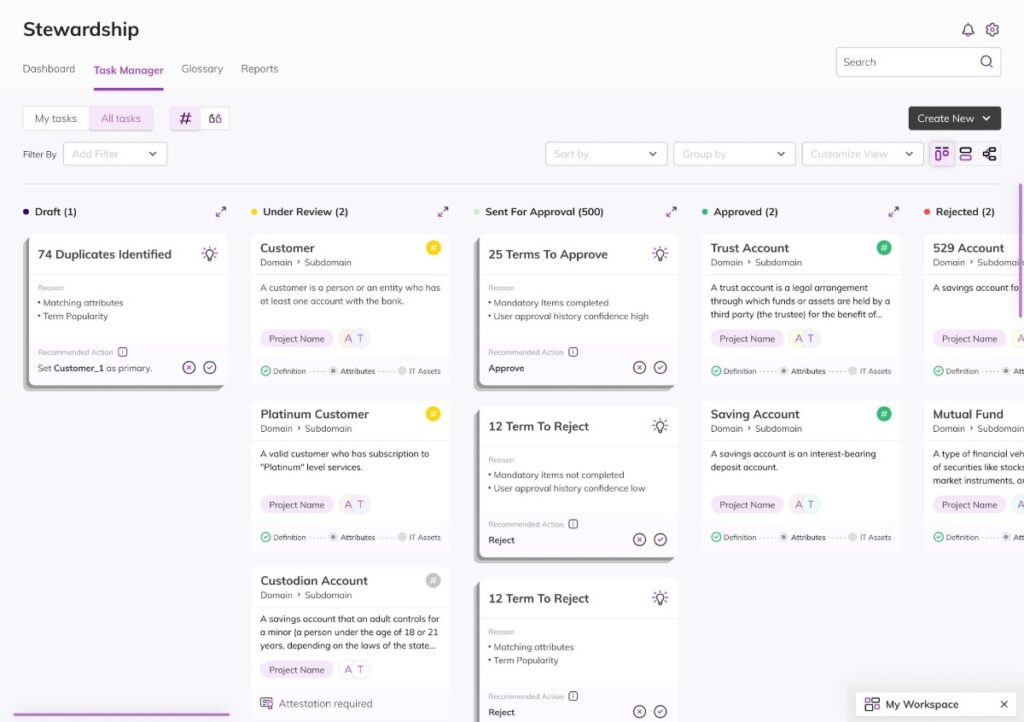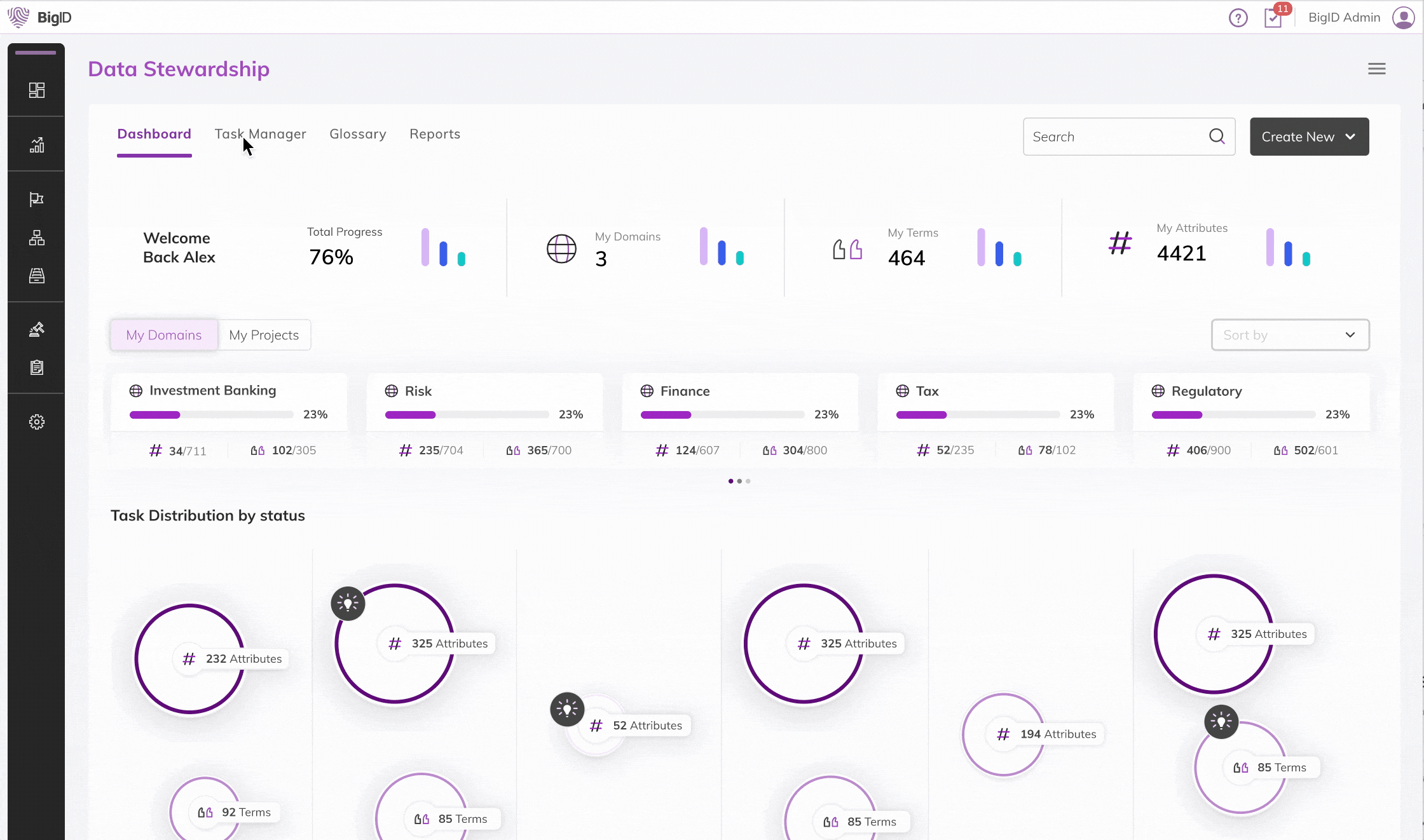While the data steward’s role can vary widely across different companies and industries, the core responsibilities remain fairly consistent. Read on for guidelines and best practices for how data stewards can perform most effectively in their role.
What Is a Data Steward?
The term “data steward” is often used interchangeably with terms such as: “data owner,” “information governance manager” or simply “information manager.” However, these titles vary by industry or organizational structure. Whoever holds this position has overall responsibility for ensuring that all aspects of your company’s data—from its accuracy to its security—are being managed consistently across all departments.
Whether they work in marketing or accounting doesn’t matter as long as they’re working toward common goals through clear policies and procedures that everyone can understand and follow consistently.
Data stewards ensure that your organization’s data is used and managed in a way that aligns with its business goals. This can take many forms, but it all comes down to ensuring that your company has control over its sensitive information so it can make informed decisions about how it should be used—and by whom.
Why Is Data Stewardship Important?
If you’re wondering why you should implement a data stewardship program, then look no further than the promise of a better business. The ability to govern your company’s data and make informed decisions based on what it is and where it resides, will help your team achieve its goals.
As an employee or executive looking to improve your organization’s performance, you know that having access to reliable data is essential for making informed decisions. Data governance helps ensure that every piece of information being used in the decision-making process arrives safely, accurately, and in real time. This means better outcomes for everyone involved—and less risk associated with operating without proper oversight over critical company assets such as customer information or trade secrets.
Data Steward Responsibilities
A data steward — a subject matter expert responsible for a group of data or data domain — typically ensures that their organization defines business terms, creates and maintains data quality rules, and applies data usage consistently and accurately across all systems, applications, and reports. Data stewards are responsible for ensuring that the management and governance of an organization’s data is aligned with its business needs, goals, and compliance requirements.
In some organizations, data stewards may also be responsible for access governance — or granting approval for users to access data sets. They’re often responsible for lines of business in their organization, as well as overseeing data custodians, business stakeholders, or operations team members.
Regardless of the organizational hierarchy, all data stewards need to learn what processes they need to adhere to in order to maintain the integrity of the company’s data. If none of these processes or procedures already exist, it’s up to the data steward to create them to ensure that the data is properly maintained.
Creating proper processes involves knowing and identifying:
- where the organization’s data exists and is stored
- who has access to the data — and the purpose of their usage
- which systems are downstream consumers of the data
- which business and risk processes are impacted by the data
- the definition and data quality standards around the organization’s data
Data Stewardship Best Practices
Data stewards work diligently on a daily basis to create an initial set of definitions for the data elements they govern, standardizing them across the enterprise and carefully documenting all exceptions where they might not apply.

Data Mapping and Metadata Management
After that, data stewards need to classify the data elements and tag them appropriately for proper contextual usage. Take for example mapping the “personally identifiable” classification to each data element (if applicable). Is it a sensitive, restricted, or confidential element? Should this element only be used in financial transaction calculations?
These types of metadata will help the data analyst understand how to apply the data in different business scenarios. The more business and operational metadata that can be identified and documented in a central repository, the better. This context enables business users to use and trust the data.
Understand How Data Is Being Used
Identifying how data is used can be tricky, especially in large, sprawling organizations that have complex systems and downstream applications. For one thing, multiple copies of the data may be stored without the data steward’s knowledge. As much as possible, however, it’s important that data stewards identify the lineage of the data, back to front, leveraging technology partners.
Knowing where the data originates helps identify the main sources of data quality areas. Identifying controls at data points where data quality is poor can reduce risk.
In addition, the data steward should know which business areas have a need for the data and may require multiple contextual, specific definitions.
Remediate Data Quality Issues
Data stewards oversee data from cradle to grave. Starting at the consumption or ingestion point, the data steward is familiar with the original quality of the data — especially if it comes from a third-party vendor.
Data stewards can also help define data quality rules from the producer of the data set — if the data set is created internally. They can help document data quality rules that are necessary for the data users. Often, these rules will differ for the producer and the consumer.
Ultimately, the data steward works between different groups to help set expectations on data remediation — alongside technology and operations teams.
The Roles of Data Stewards Vs. Data Owners
A data steward should never work in a silo. They must partner with lines of business — plus technology, operations, and risk and compliance teams — on the proper understanding and usage of the company’s data.
If the data steward works in a department that also serves as a provider of the data, this requires working closely with the data owner — or the senior stakeholder who is ultimately accountable for the quality of the data.
Working with the data owner, the data steward must frequently and thoroughly communicate the proper definition of data elements. They may also need to document all variations of a definition — and strive to standardize a single working definition across the organization.
However the responsibilities break down at a particular company, it is always crucial that the steward effectively collaborate to ensure the proper use of data elements throughout the company.
The Roles of Data Stewards vs. Data Analysts
Data stewards are responsible for the management and governance of data, including planning, monitoring and documenting processes that support the business. They also serve as a liaison between business users, IT and other stakeholders throughout the entire lifecycle of a dataset.
Data analysts are responsible for analyzing data to identify trends or patterns in order to make effective decisions about business processes or operations. Data stewards are responsible for ensuring that all data used by analysts is accurate, trustworthy and secure at all times.
Key Data Stewardship Technologies
Data stewardship is the responsibility of an individual or team to ensure that data is managed effectively, including how it is collected and stored. Data stewardship tools are used to manage information throughout the entire process from collection through storage and retrieval.
- Data governance: This encompasses policies and procedures around collecting, storing, processing and destroying data.
- Data quality management: This involves ensuring that all information provided is accurate by reviewing its completeness, consistency and validity (the three C’s).
- Master data management: This involves managing all customer-related information such as names, addresses, phone numbers across multiple systems in an organization so it can be easily accessed by all staff members who need to use this type of information for their work processes.
Accelerate Your Data Stewardship Program with BigID

BigID’s data intelligence platform combines a foundation of data discovery with apps to take action – enabling organizations to ultimately get more value from their data.
With BigID, data stewards can:
- automatically discover, catalog, and map all data across the enterprise for better governance
- leverage ML & AI for deep data insight
- classify personal, sensitive, and regulated data for compliance and reporting
- define and tag data for purpose of use
- take action on duplicate, similar, and redundant data
- apply data retention and data remediation workflows to manage end-to-end data lifecycle management
Request a demo to learn how BigID empowers data management teams to work collaboratively across the business — and technology teams to find, remediate, and protect data.
